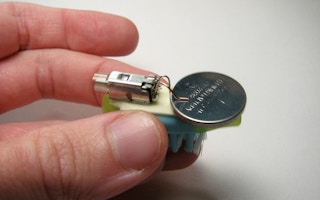The discovery of vast lithium deposits in the Indian territory of Jammu and Kashmir, hailed as a win for the country’s clean energy transition, comes at a price for communities in the Himalayan region, say villagers and environmental scientists.
Often called “white gold”, the metal is a key component in lithium-ion storage batteries, which are crucial for electric vehicles because they are weight-for-weight far more efficient than the commonly used lead-acid or nickel-metal hydride batteries.
The announcement in February of lithium deposits in the Reasi district of Jammu and Kashmir, estimated at 5.9 million tonnes, was welcome in a country committed to transitioning away from fossil fuels. India previously had to rely on lithium imports from countries such as Australia and Argentina.
However, it comes amid reported subsidence of the Himalayan landscape triggered by the heavy machinery used to build dams and highways, raising concerns of further environmental damage.
“Use of heavy machinery for drilling and earth-cutting in the sensitive Himalayan region has been largely responsible for subsidence in Joshimath town,” says SP Sati, who teaches environmental science at the College of Forestry, Ranichauri in the adjacent Himalayan state of Uttarakhand where the subsidence has been devastating in recent months.
The residents of Reasi recognise the economic opportunities the lithium reserves can bring, but also the risks, as sinking houses force many to evacuate their homes to safer areas.
“When we first came to know about the discovery of huge lithium reserves just adjacent to our village, we were happy that it will bring us prosperity. But we now hear that when the extraction takes place, it can prove hazardous for us and our water and land,” says Balbir Singh of Salal village which sits on the lithium deposits.
“Even if we get some compensation for dislocation from our village, the thought of leaving the homes we have lived in for generations makes us very sad,” Singh says.
Mohinder Singh Sarpanch, head of the village of Salal, says the village should be compensated for the impacts of mining in their community. “So far, we have not been officially asked to vacate our village. If residents from the entire area are required to vacate, then over 500 families will get affected,” Sarpanch says.
“It is not only about dislocation; there will be pollution which we will have to bear if we are relocated to a nearby area. If we are asked to give these sacrifices for the country, the government has to think about us,” Sarpanch adds.
It is not clear when the Indian government is planning to start lithium extraction, but experts say it could be years before commercial mining operations begin.
“
Ensuring an environmentally friendly mining process is also essential to attract investment from large international companies given the growing global scrutiny of the battery value chain’s environmental footprint.
Siddharth Goel, senior policy advisor, International Institute for Sustainable Development
“So far, only the primary resource calculation has been done. There are two more steps before we are sure about the exploitable resources and whether we will go for mining or not… it will take several years for the resources to be mined,” says Pankaj Srivastava, a professor who specialises in mineral exploration at the department of geology, University of Jammu.
India would need to acquire specific technologies for mining and refining lithium, he added.
According to Siddharth Goel, a senior policy advisor at the International Institute for Sustainable Development with experience in the fields of environment, energy and sustainable transport, lithium mine development can take 10 years or more. “However, it’s possible that India fast-tracks approvals and permits to reduce the time taken, given the critical importance of lithium in manufacturing electric vehicle batteries,” he says.
S S Verma, a professor at the department of physics at Sant Longowal Institute of Engineering and Technology, in Longowal, Punjab state, says that India has a long history of working mines and lithium mining is not difficult, “but refining is (evidently) difficult”.
Independent environmental impact assessments should be carried out before mining begins, given the sensitive ecology of the Himalayas, says Goel.
“Ensuring an environmentally friendly mining process is also essential to attract investment from large international companies given the growing global scrutiny of the battery value chain’s environmental footprint,” he adds.
Shakil Romshoo, senior professor in Kashmir University’s department of earth sciences, says: “The discovery of lithium in the country is a big development as India aggressively pursues clean energy production. But considering the significant environmental impacts of lithium extraction, environment-friendly exploration technology will be needed whenever this resource is exploited.”
Lithium mining has sparked protests around the world in recent years. According to a study published February in Nature, ecosystems in the vicinity of lithium deposits are “extremely fragile and linked in a food chain in which ecosystem services are crucial for livestock and rural populations”.
This article was originally published on SciDev.Net. Read the original article.

















